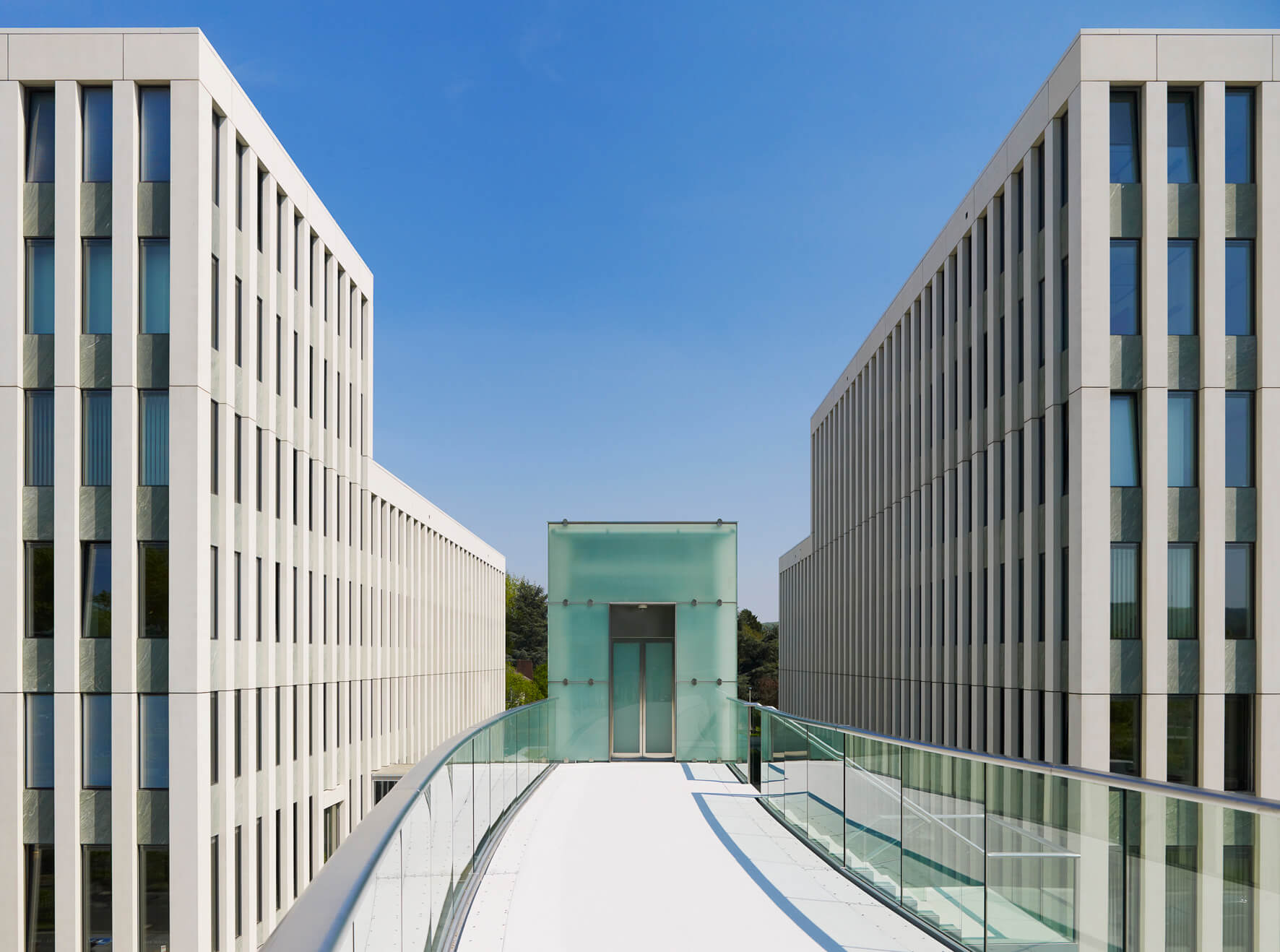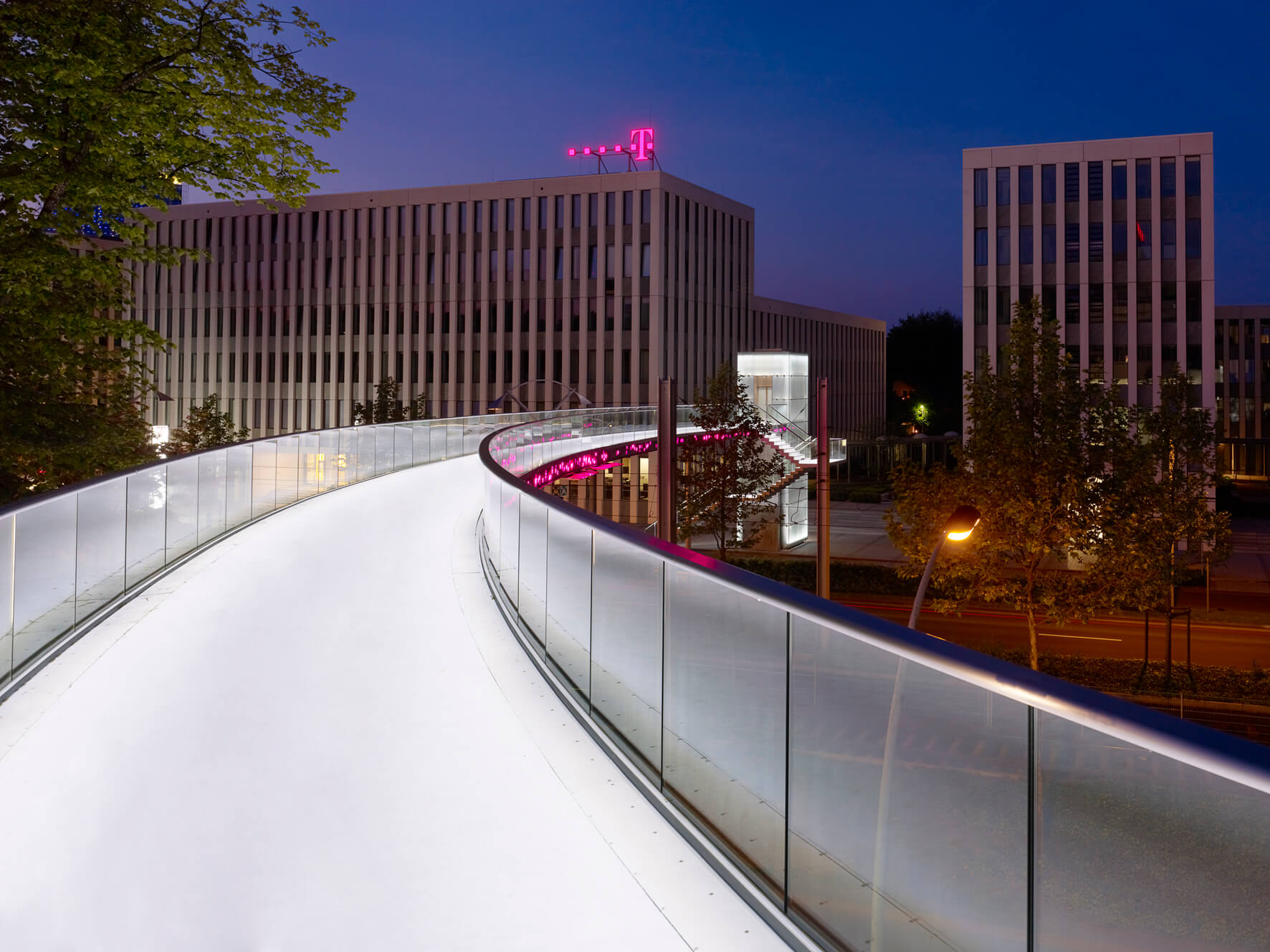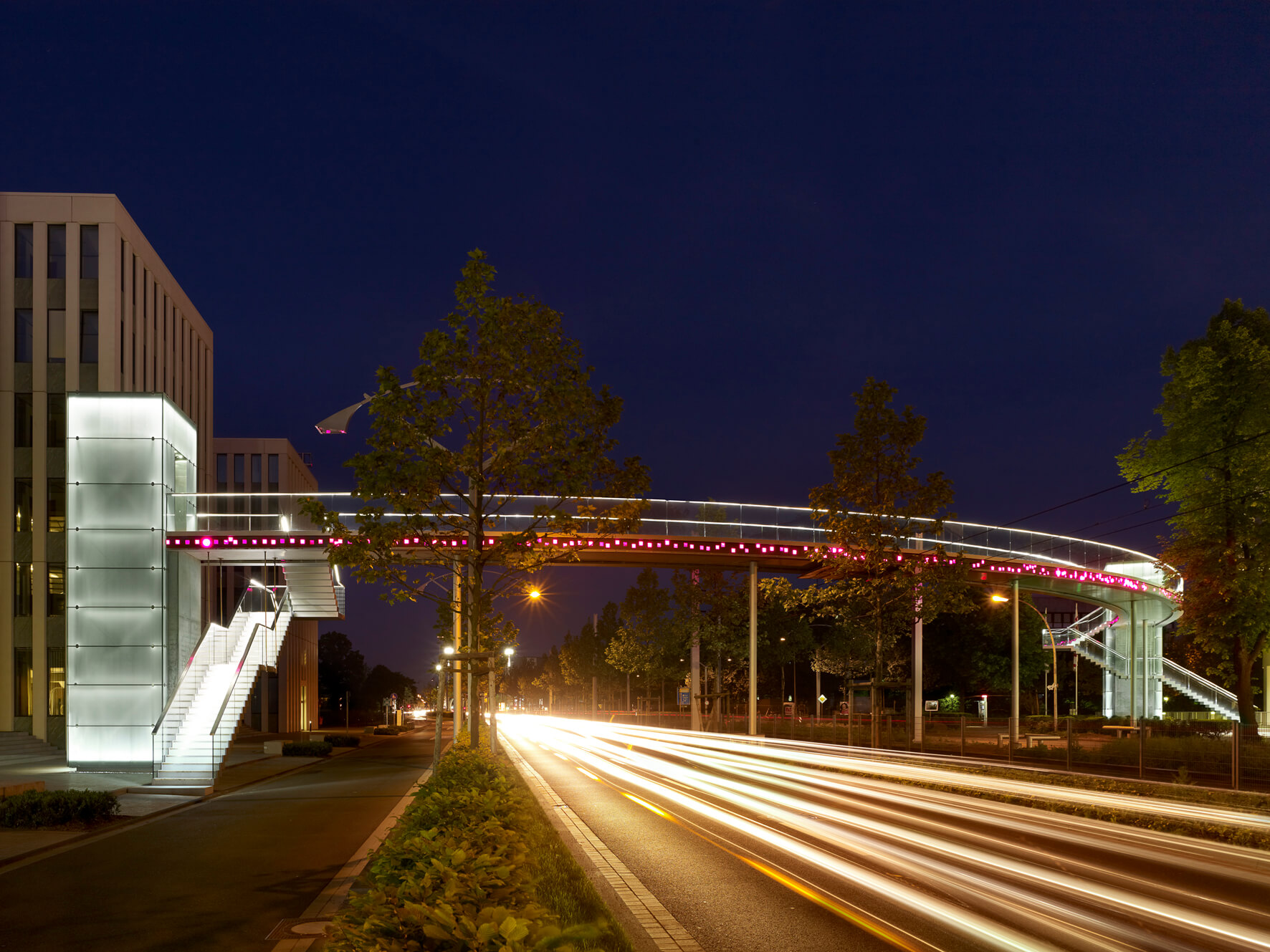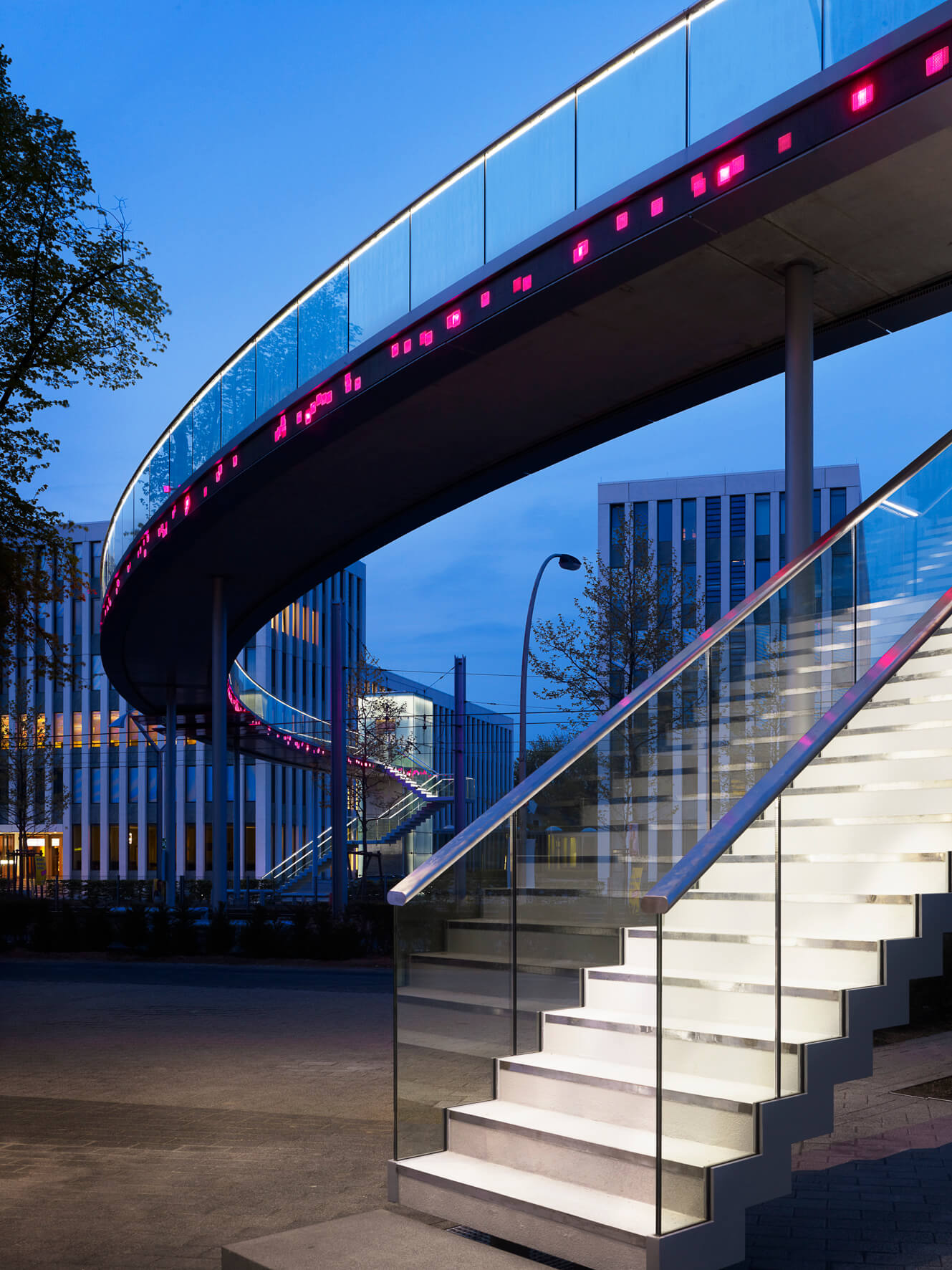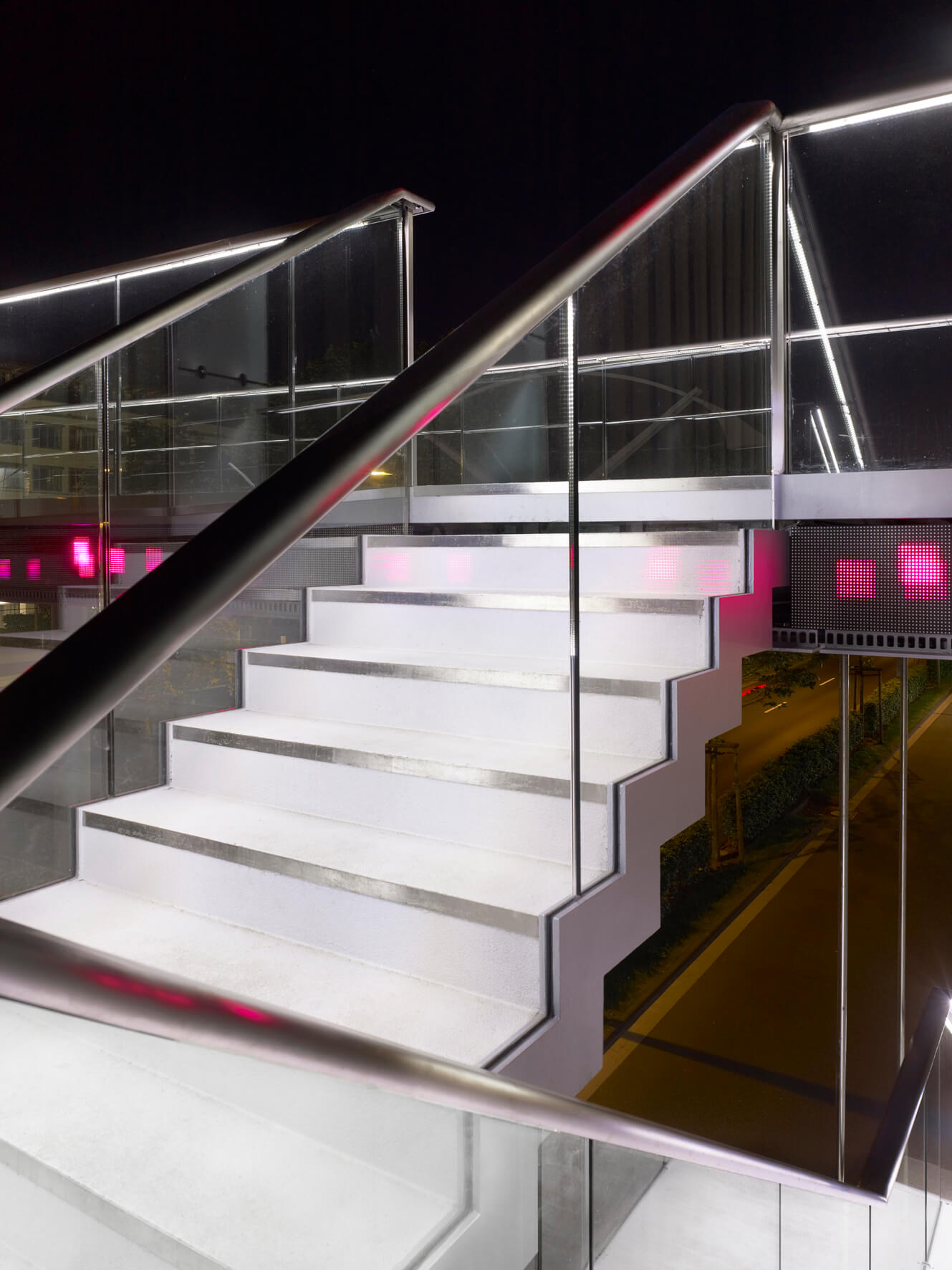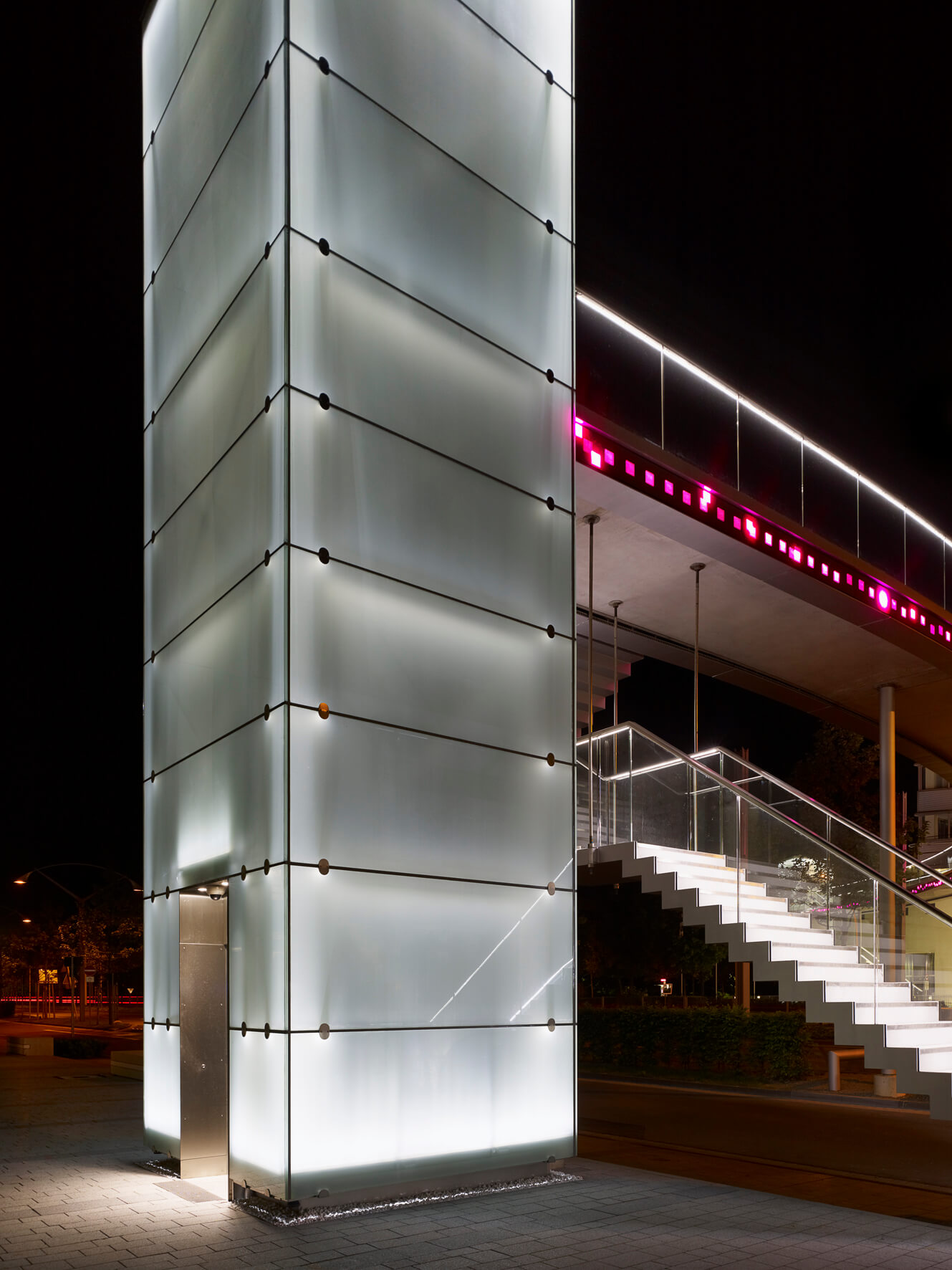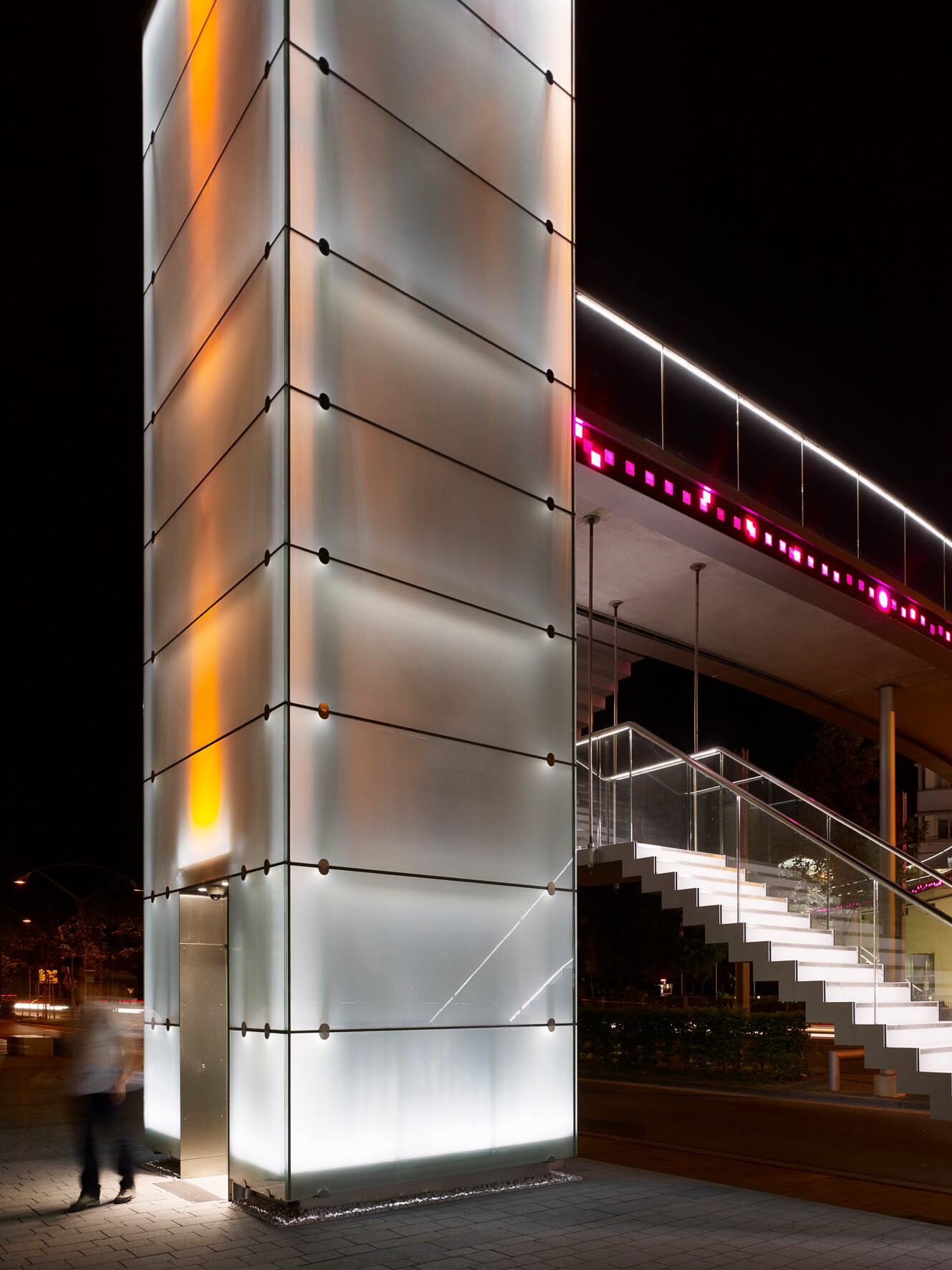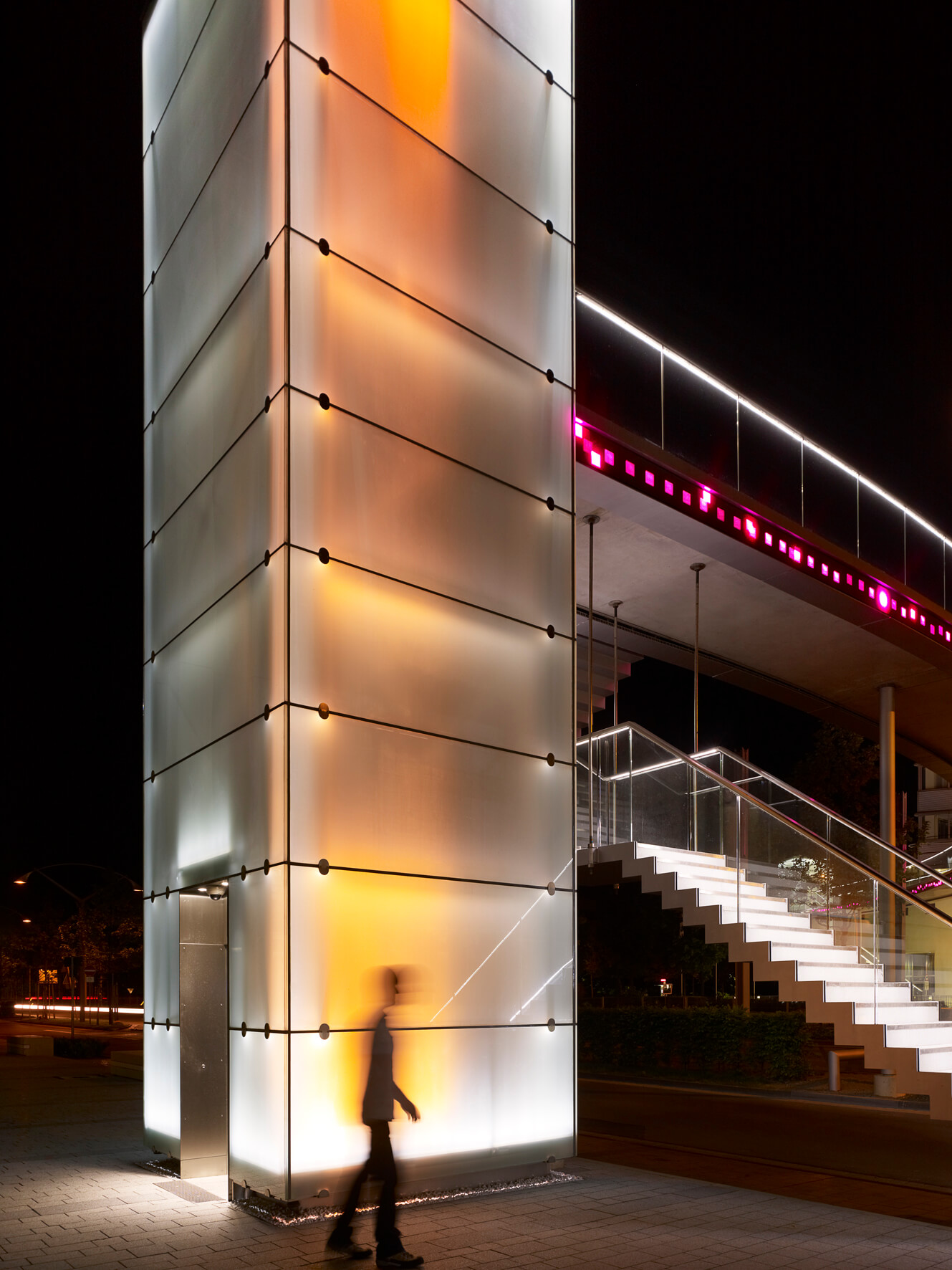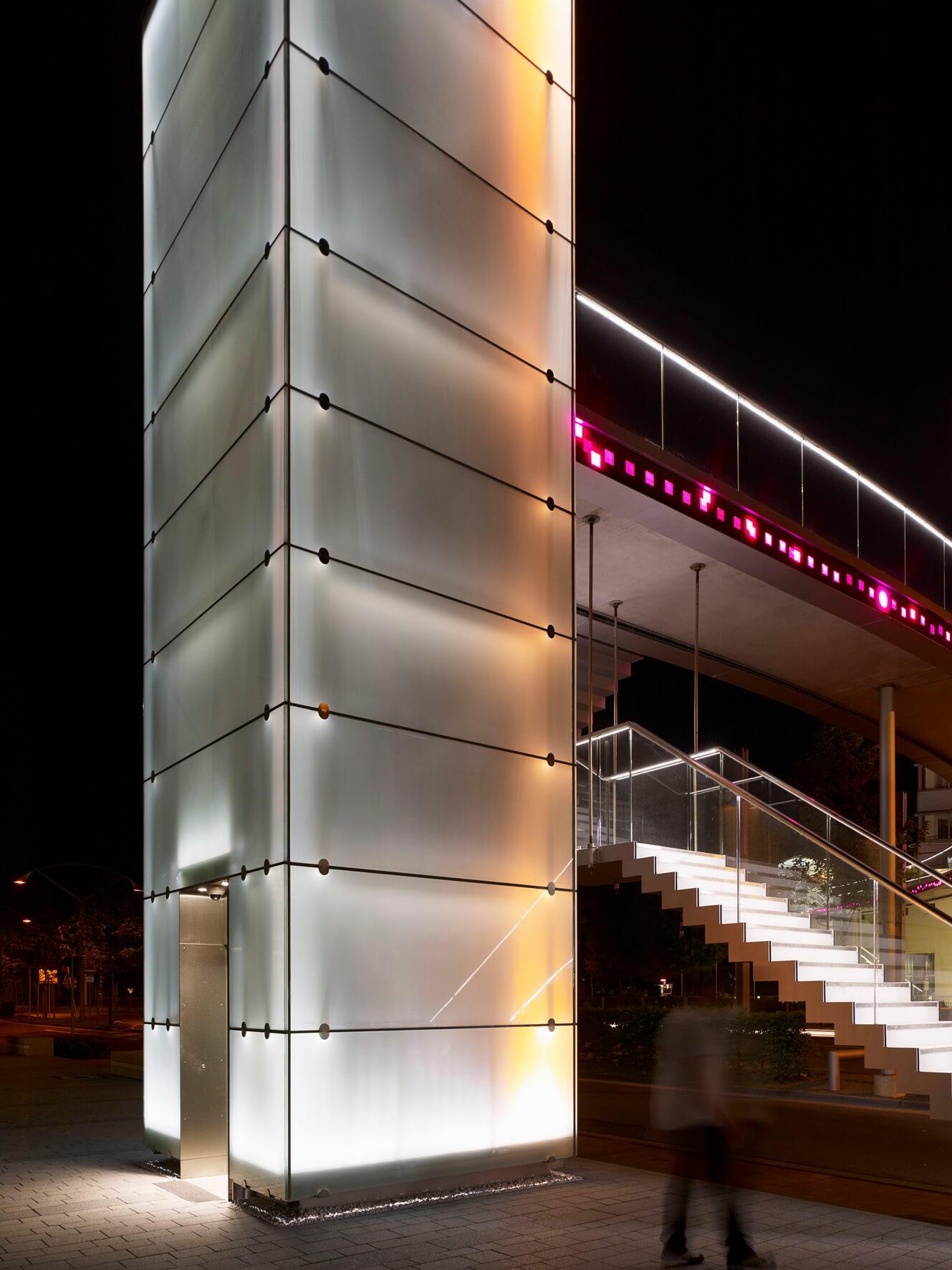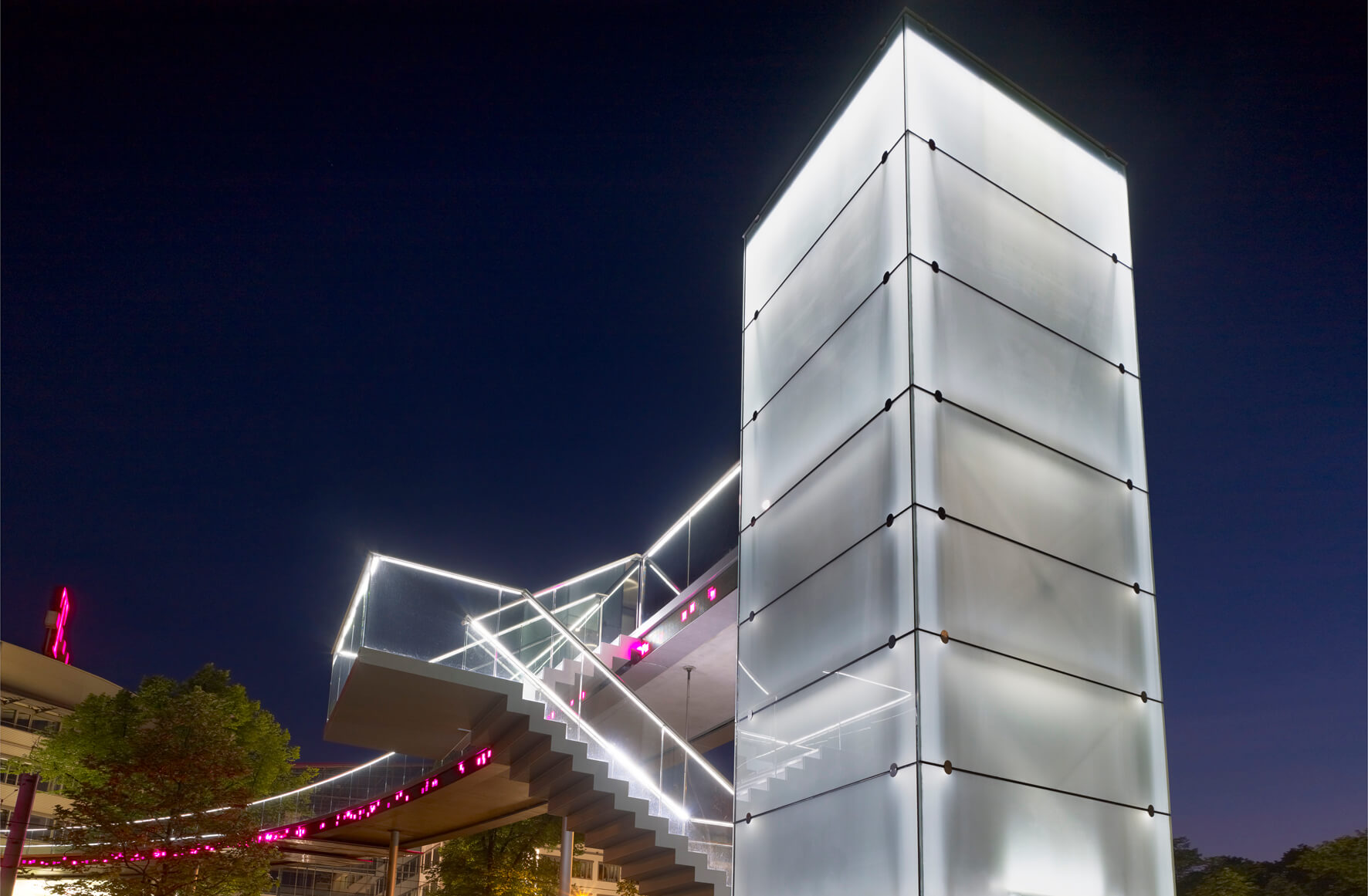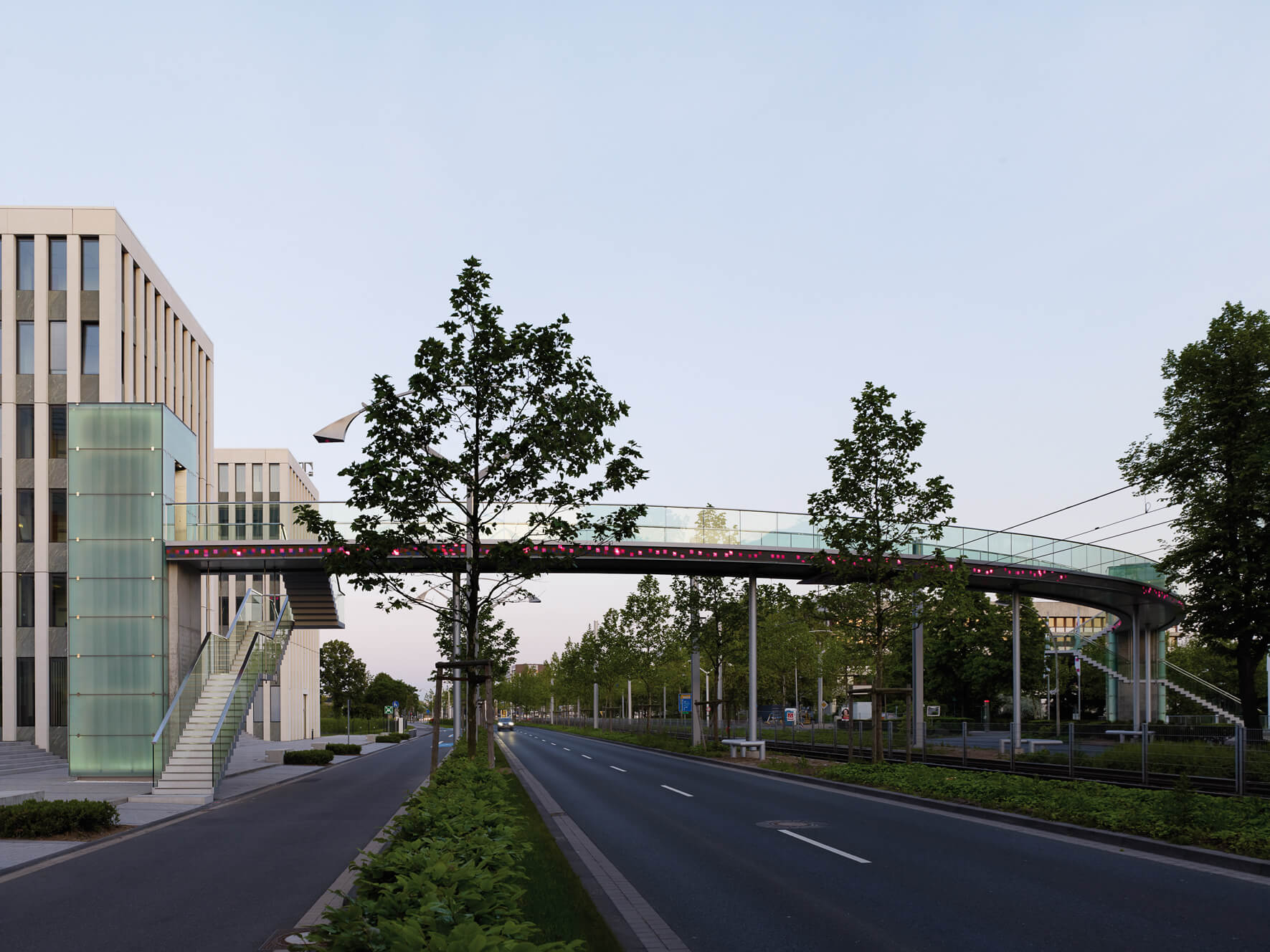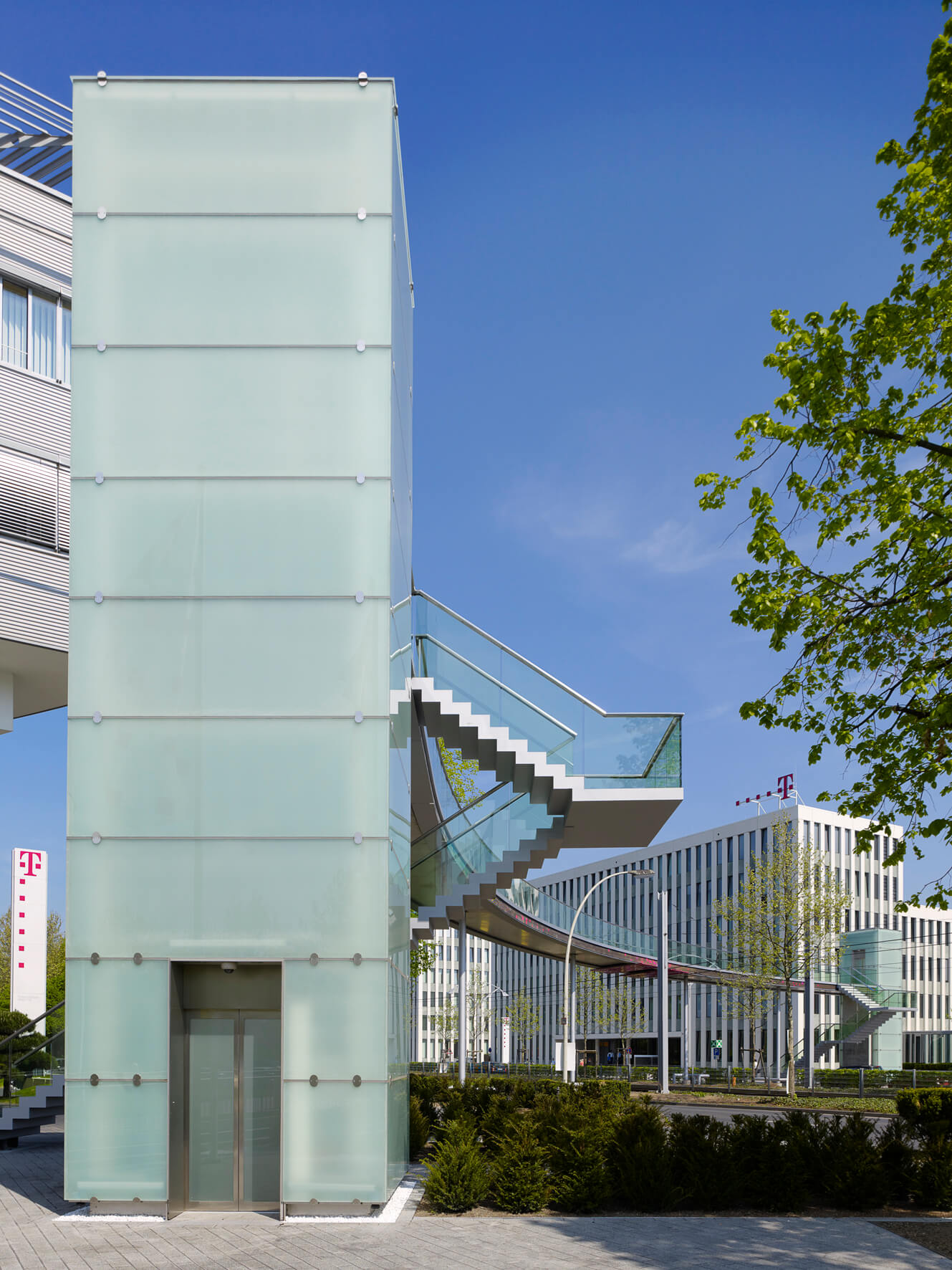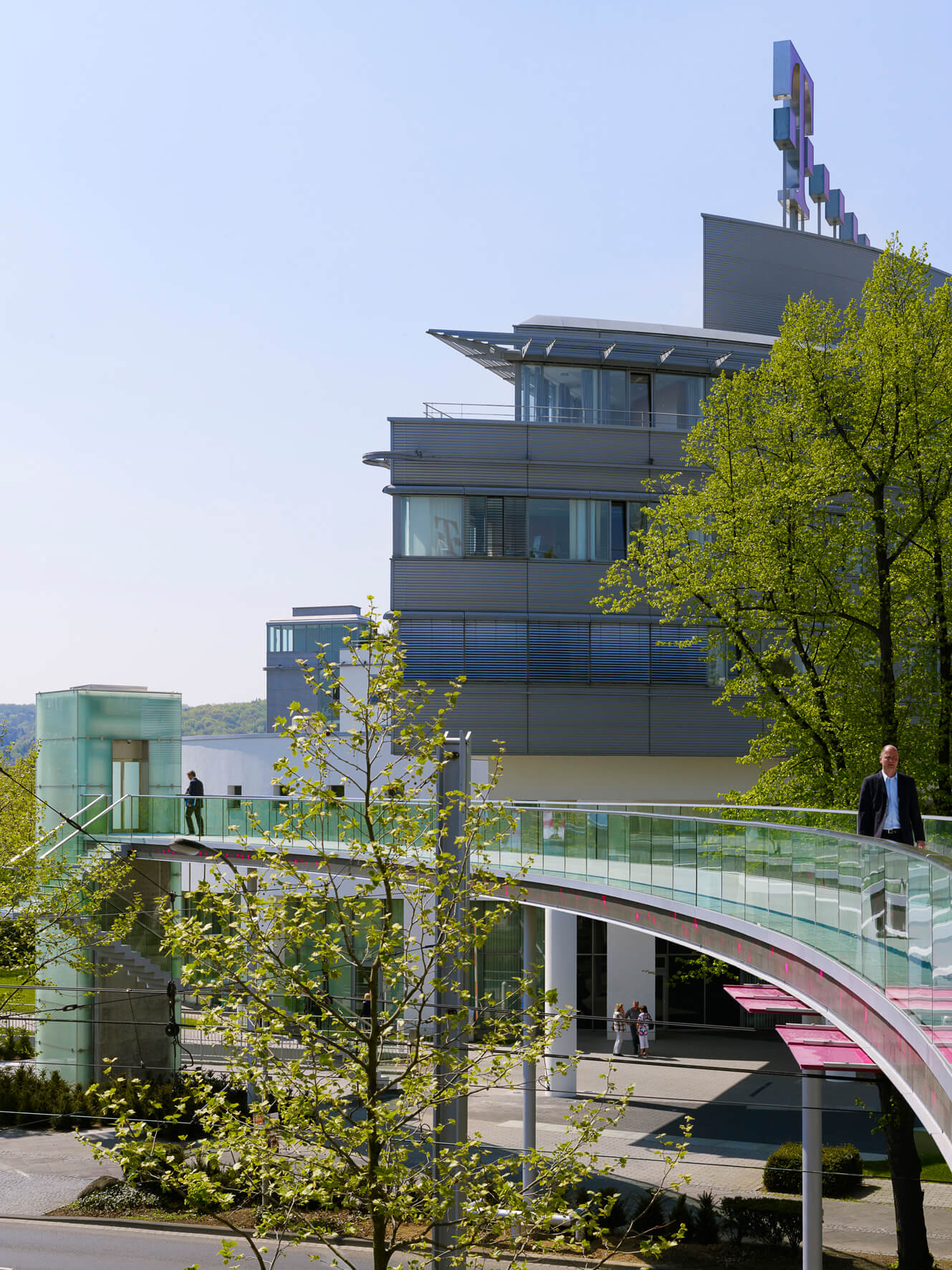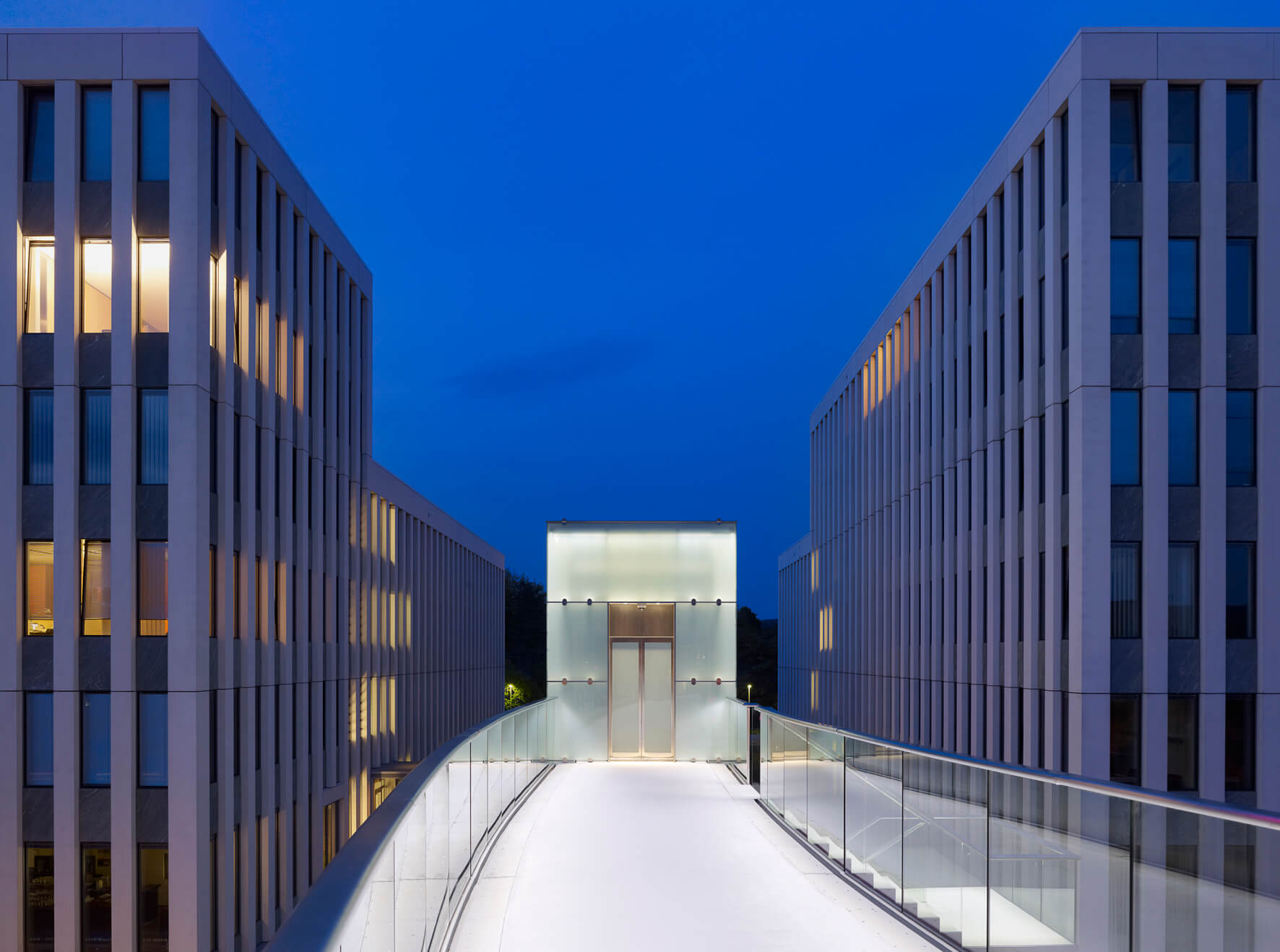
Telekom Bridge
A Connecting Experience – The Telekom Bridge in Bonn
Early 2009, Deutsche Telekom AG decided to build a pedestrian bridge between the group headquarters and the Telekom Deutschland GmbH head office on the other side of the B9 road. The slender pedestrian bridge has an overall length of 74 m. Five slim steel columns support the flat path which forms one grand curve 7 m above the main road. Each end of the bridge is flanked by suspended stairs. Two elevator shafts mark the extent of the structure.
Linear LED profiles integrated into all handrails on the stairs and the bridge homogeneously illuminate the footway and the stairs with neutral white light. The luminaires are concealed during the day and there is no glare to vehicular traffic below because of a clearly specified narrow beam light distribution.
Both long sides of the bridge are clad with a string of custom-made exterior-rated SMD LED video display modules seamlessly arranged to one bespoke media screen. Due to their very high luminous density of over 7,000 cd/sqm media content is also visible during the day. This requires that at night the overall brightness of the LEDs be reduced to 30 % of their maximum lumen output.
During daytime, the two towers of a height of 11 m feature tall monolithic solitaries, but also at night they mark the entrances of the two large office buildings. The towers are filled with light from neutral white LED profiles mounted to the top and bottom edge, grazing the gap behind the opal glass cladding which in turn gives off a diffuse glow. The slightly transparent glass reveals the facade fittings and lends visual depth to the architectural volume.
At night, passers-by can interact with the towers and control a dynamic lighting installation that is visible from afar. Double pulse lasers at the bottom edge of the facade detect the position of a person walking by, prompting the control software to switch on and off individual amber colored luminaires. The vertical section of the glass facade nearest to the passers-by lights up in a varying intensity depending on the distance of the person. People intuitively understand this immediate reaction and can playfully influence the appearance of the towers by stopping, progressing, changing directions.
